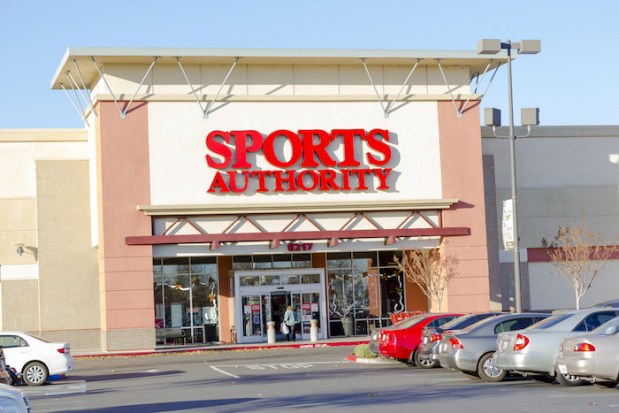What Will Become Of Sports Authority’s 450 Stores?

For anyone who has yet to pay their respects to the dearly departed Sports Authority brand, there’s still time. June 29 has been set as the date when 320 of the defunct sporting goods brand’s 450 retail store fronts will be put up for auction as a final — or, at least, near-final — step in its protracted and convoluted liquidation proceedings. It will be a merciful end for the retailer that has not only seen its financial fortunes diminish to almost nothing but has also sparred with suppliers over what merchandise the retailer is and isn’t allowed to sell to pull itself out of ruin, one cleat at a time.
So, in a few short weeks, Sports Authority’s physical legacy will take another step toward the sands of time. However, as so often happens in retail and in life, the end of one story only means the beginning of another.
While Sports Authority might not care much about what happens to the hundreds of store fronts it leaves behind, the evidence is mounting that the locations could prove to be the retail equivalent of a Pandora’s box — depending on how they’re handled. Right off the bat, though, it’s as clear as can be that the sheer scope of Sports Authority’s brick-and-mortar empire means that all of its store fronts being filled by opportunistic buyers is nothing short of a Hail Mary. Moreover, Ryan Severino, senior economist and director of research for New York-based commercial real estate firm Reis Inc., noted that any prospective buyers are likely to be extremely choosy when it comes to committing themselves to property.
“If [the stores] are in good-positioned centers, in markets [buyers] want to be in, I could see some organizations be opportunistic about it,” Severino told The Denver Post. “But it’s a lot harder to see someone come in and say, ‘Yes, we want all 450 stores.’”
Since it’s a safer bet that dozens, if not more, store fronts will go orphaned come the end of the month, the question then becomes: What are commercial landlords supposed to do with all that space? Sports Authority’s former locations aren’t the size of Walmart or Costco superstores, but they’re also far from pop-up shops. And lingering vacant space in commercial centers can do more harm for business than no building in its place at all.
If big-box retailers aren’t going to step up and fill the B&M shoes of the sunk Sports Authority brand, then it’s up to property developers and retailers with an eye toward expansion to figure it out for themselves. One solution to the growing number of vacant big-box store formats has been not to search for an equivalent oversized retailer to take up residence but rather to segregate the existing space into smaller compartments for so-called “junior box retailers.” While there’s no accepted size for junior box brands — “smaller” seems to be the safest description — the advantage for landlords is self-evident: more tenants to pay rent in the same space.
However, like most of retail’s best-laid plans, the reality of converting brick-and-mortar store fronts conceived and built for big-box brands into several discrete fragments doesn’t come without a cost.
“The biggest reuse challenge is the sheer size,” Julia Christensen, Oberlin College professor and author of “Big Box Reuse,” told The Des Moines Register. “These buildings are huge and not easily broken up into multiple spaces due to how plumbing, electric wiring and facades are structured in the spaces.”
No matter, the eternal retail optimist says. There are plenty of brands out there looking to downsize their physical store fronts anyway, right? And the addition of more junior box-able real estate to the market would feed right into an existing trend, yes?
If only it were that simple, the eternal retail pragmatist says (cynic, if you’re Sports Authority). Oversized retailers, especially those that cross multiple product categories, like Meijer, have found that smaller stores necessitate a drawback in product offerings to fit the smaller footprint, and while this may seem A-OK in an age of omnichannel fulfillment, there’s still a marked effect on how consumers view the “new and improved” store formats.
“The problem is that, when you run these gigantic stores and then you start a smaller version, [shoppers] walk in and go, ‘Where’s the Meijer I know?'” Jon Springer, editor at Supermarket News, told Crain’s Chicago Business. “It causes some identity issues. Meijer is more than a grocery store, but how much more?”
With this much uncertainty in how to treat the growing number of vacated and voluminous retail properties, it’s enough to make it seem like Sports Authority is the one that got off easy.
